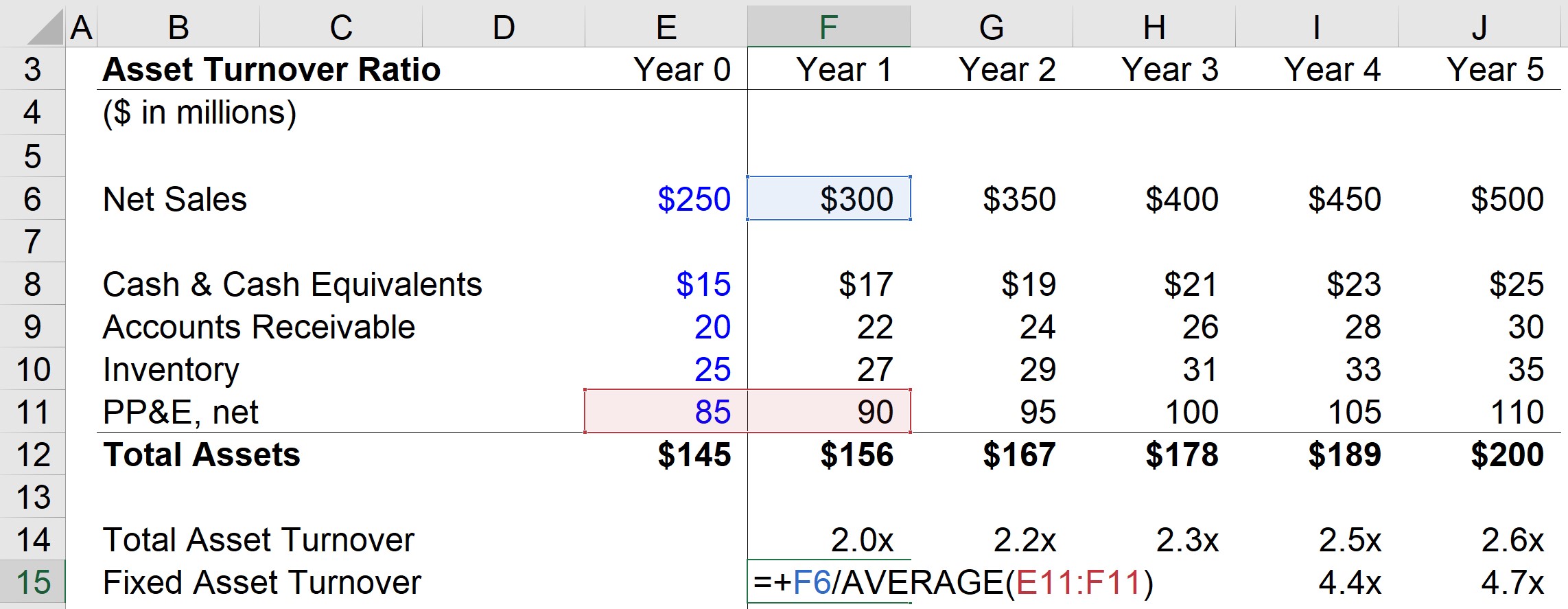

How IoT Asset Tracking Solutions Help To Improve Fixed Asset Turnover Only then can businesses optimize their fixed asset turnover and achieve sustainable growth. Without proper management, these assets can reduce the overall fixed asset turnover ratio and negatively impact the company’s income statement.Īddressing these challenges requires a clear understanding of the underlying data and implementing sound asset management strategies. This can lead to an unreliable fixed asset turnover ratio, which in turn impacts the company’s financial performance.Īnother challenge is the inability to identify underperforming assets and inefficient asset allocation. One common challenge is the lack of accurate data regarding asset acquisition and accumulated depreciation. However, many businesses encounter challenges when it comes to effectively managing this metric and its impact on their balance sheet. While there is no magic number, industries have averages that can guide investors in assessing the success of a particular company.Ĭommon Challenges Associated With Fixed Asset Turnoverįixed asset turnover is a crucial metric as it indicates how well a company is utilizing its fixed assets to generate revenue. Ultimately, investors can use the asset turnover ratio formula to assess a company’s operational efficiency and financial health.


The higher the fixed asset turnover ratio, the better a company is at generating sales through the optimal use of its fixed asset bases, including property, plants, and equipment. This metric is especially important for capital-intensive industries such as manufacturing, construction, and utilities. In simple terms, calculating the asset turnover ratio compares how many dollars of net sales are generated from each dollar of net fixed assets owned by the company.
#FIXED ASSETS TURNOVER FORMULA MANUAL#
In this blog post, we’ll discuss how leveraging IoT solutions can boost your asset turnover rates for enhanced visibility into operational inefficiencies, increased ROI from existing assets, and reduced maintenance time & costs associated with collecting manual data across an organization’s global operations.įixed asset turnover is a financial metric that measures the efficiency ratio of a company’s utilization of its fixed assets to generate revenue. To help businesses reach their potential, many are now turning to innovative Internet of Things (IoT) solutions for improved asset tracking efficiency and performance. The ability to optimize and leverage fixed assets – think equipment and technology – helps drive competitive advantage and overall growth. As any business leader knows, one of the primary keys to success is effective asset turnover.


 0 kommentar(er)
0 kommentar(er)
